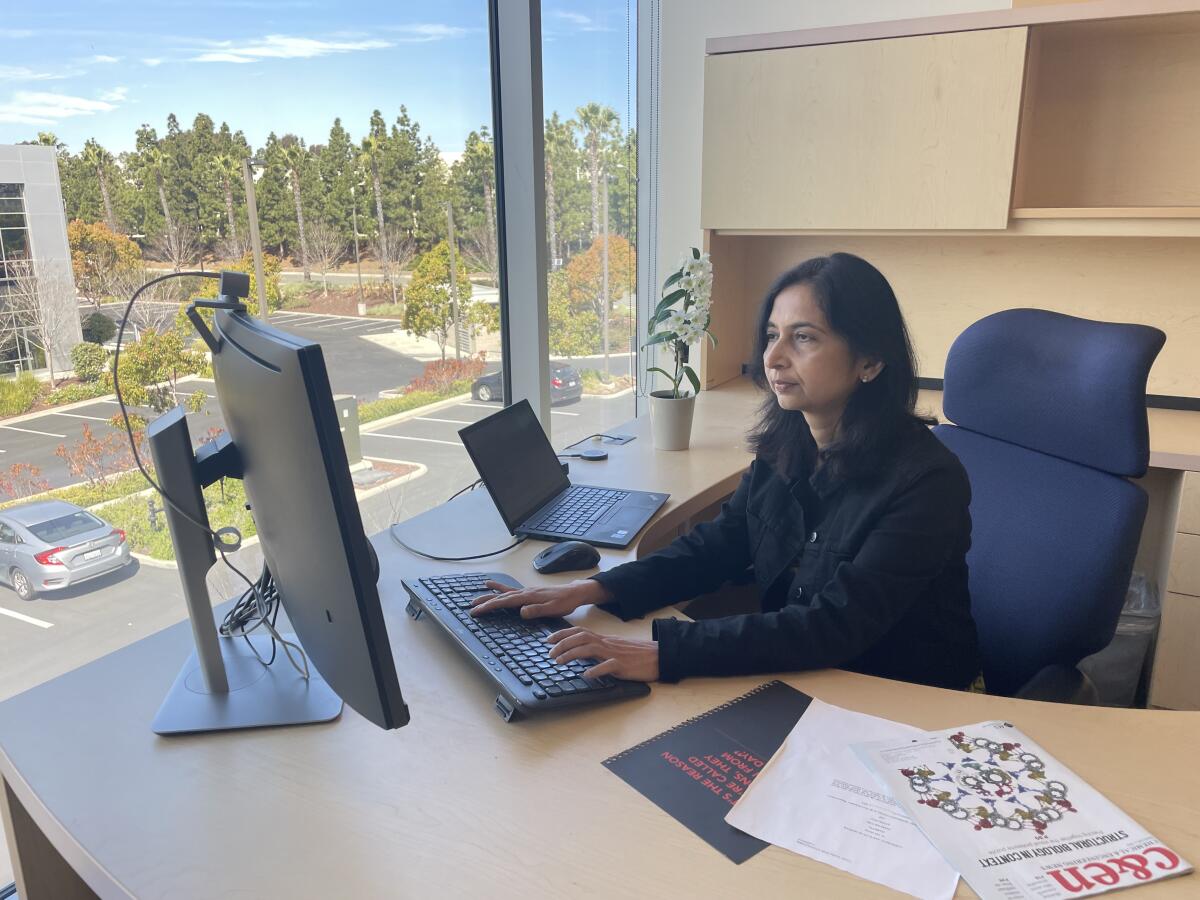Opinion: Women in science and business are making history and global impact. Here’s how.

Pharkya is the senior vice president of business operations at Future Origins and senior vice president of ventures and corporate development at Genomatica (Geno) and lives in Del Sur.
Classrooms, libraries and organizations in San Diego and across the country have been celebrating Women’s History Month throughout March. Posters and displays have been honoring the work and lives of incredible women to note their contributions to society and the world. Having spent my entire career in the biochemical sphere, I, of course, have an abiding affection for the all-stars of women’s scientific history.
As a woman working in a place that is distinctively referred to as “Biotech Beach,” I feel fortunate to have female peers at Genomatica and across the San Diego region making incredible advancements in biotechnology and having a massive impact on our world — in medicine, business, the environment, agriculture, energy and beyond. We stand on the shoulders of women in science who broke through difficult barriers to make great achievement.
I think about Katalin Karikó, whose decades-long work on messenger RNA, or mRNA, enabled development of vaccines at an unprecedented pace. There was Hedy Lamarr, who was both an actress and inventor, developing a new communication system for World War II that later served as the progenitor to Bluetooth, Wi-Fi and GPS. And I cannot forget the rocket woman herself, Southern California’s own, Sally Ride, the first American woman in space.
As I embark on my latest professional pursuit, however, I find myself with an even stronger affinity for the women in science and business whose accomplishments, while no less monumental, endeavor in a quieter but incredibly impactful space. These women are waking up each day in our region making the advancements in biotechnology that we will all benefit from. I am currently part of a team developing and commercializing a sustainable, drop-in alternative that could redefine how companies source surfactant ingredients used in products found in every household in the United States and millions of homes globally. Our goal is to commercialize deforestation-free alternatives to critical ingredients that are typically made from fossil products or palm oil and used in the formulations of everyday cosmetics, personal care and cleaning products, such as laundry detergent and face wash, through Future Origins.
And make no mistake, these unsustainable ingredients are made at the scale of millions of tons every year and finding a way to make them more sustainable will have a massive impact, significantly lowering the carbon footprint of these products and advancing the reality of deforestation-free supply chains. And as our product development phase blazes forward, I admit that the only thing more exciting than this part of the process is the anticipation of bringing these products to market and seeing just how deeply they will affect the global community.
So, this month, I will think of — and thank — women in science like Stephanie Louise Kwolek, a chemist, who while developing synthetic fibers for DuPont successfully invented Kevlar, the main component in bulletproof vests, which has indirectly saved the lives of countless United States servicewomen and men. And I will think of Virginia Holsinger, a chemist and food scientist, whose research on dairy enzymes brought about the prevalence of lactase enzymes in the production of low or no-lactose milk products. She also developed a massively scalable whey-soy drink used to feed desperate, starving populations the world over.
And finally, I will think of — and be thankful for — the future of women and girls in science, technology, engineering and mathematics, as more and more of them are entering STEM fields across the globe. In fact, from 2011 to 2021, the number of women in the STEM workforce in the United States alone increased 31 percent, from 9.4 million to 12.3 million, and continues to trend upward.
Undoubtedly, over several generations, women have made a massive and indelible mark on the global scientific and business community. It is imperative that this continues, and that women are encouraged, enabled and empowered toward the pursuit of scientific advancement and boundary-breaking new heights.
Get Weekend Opinion on Sundays and Reader Opinion on Mondays
Editorials, commentary and more delivered Sunday morning, and Reader Reaction on Mondays.
You may occasionally receive promotional content from the San Diego Union-Tribune.




